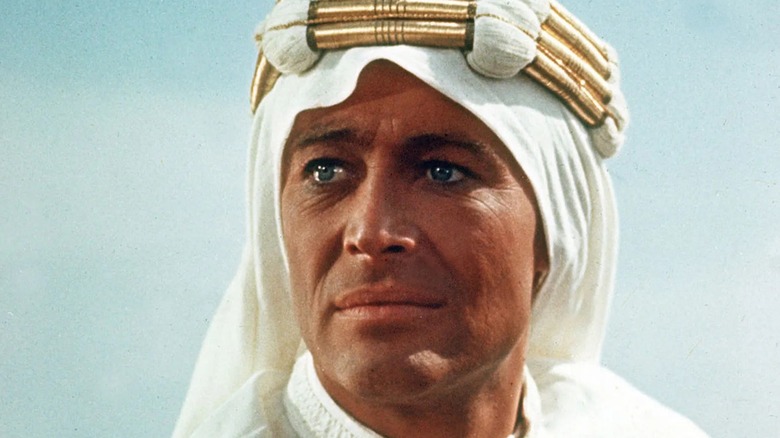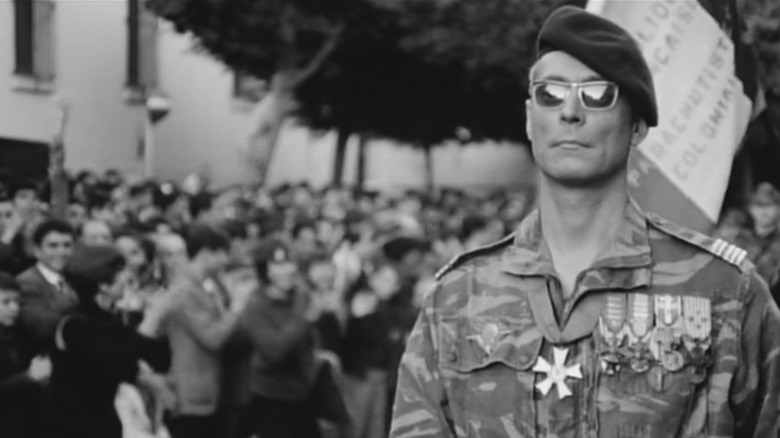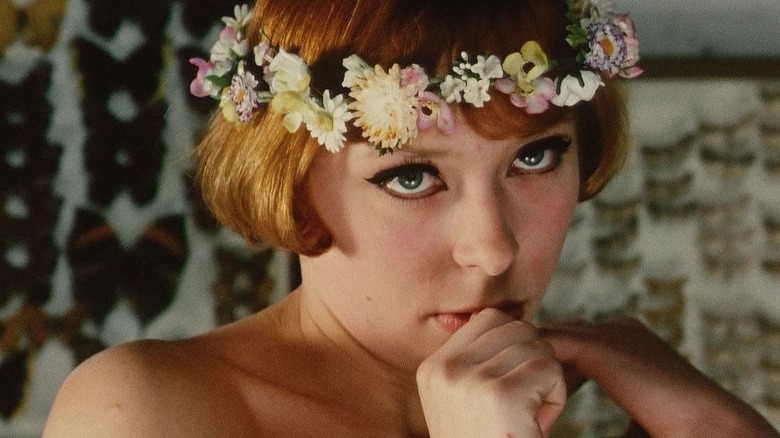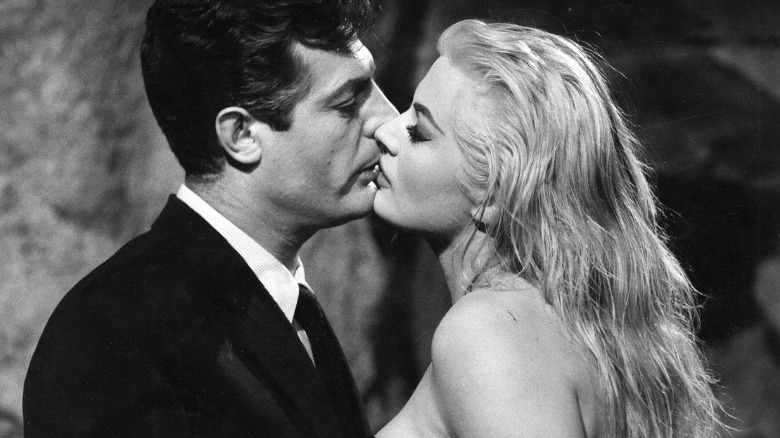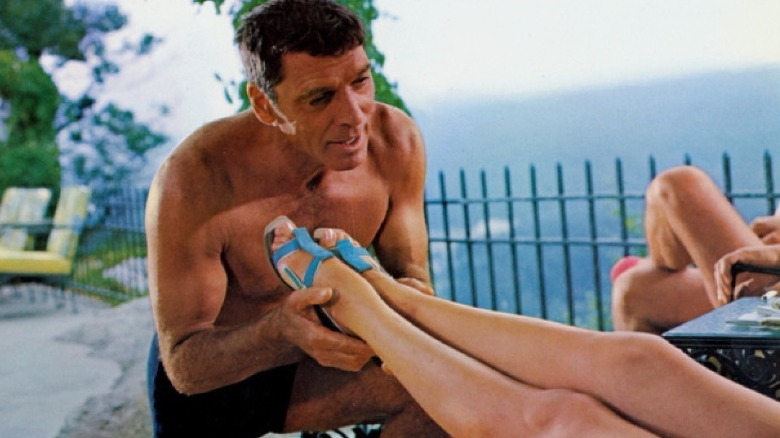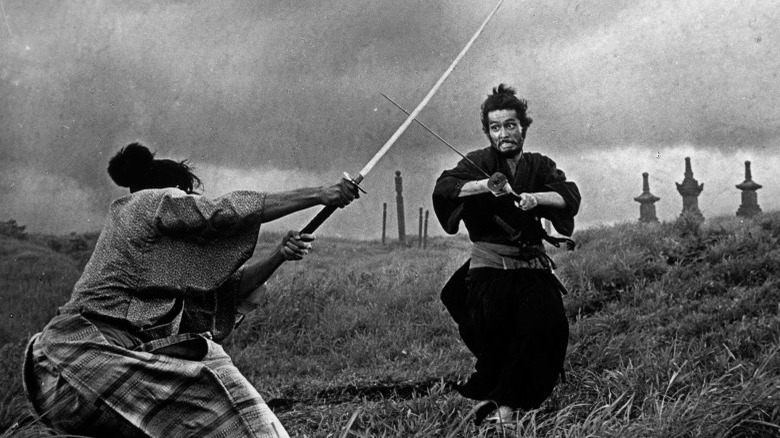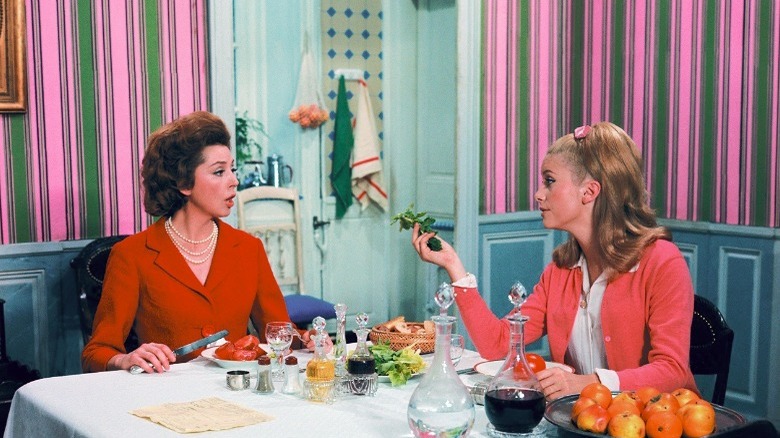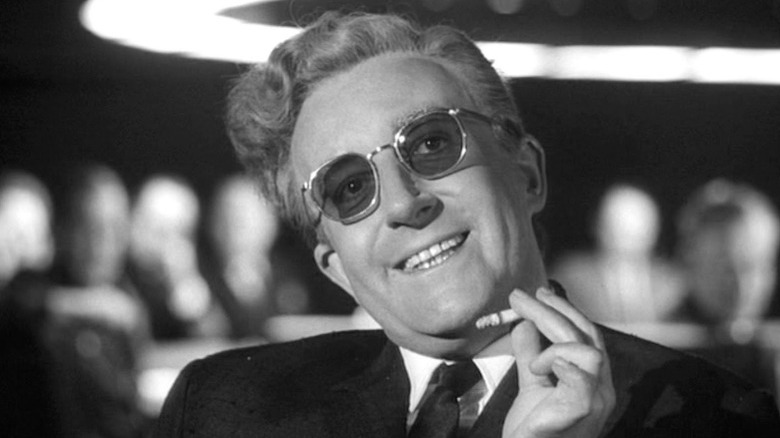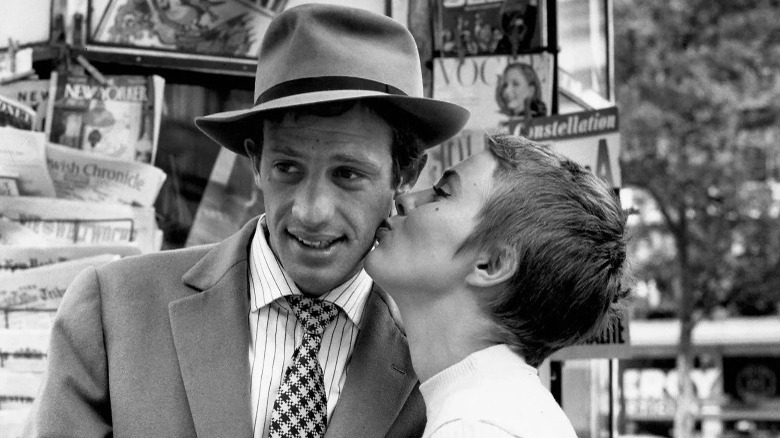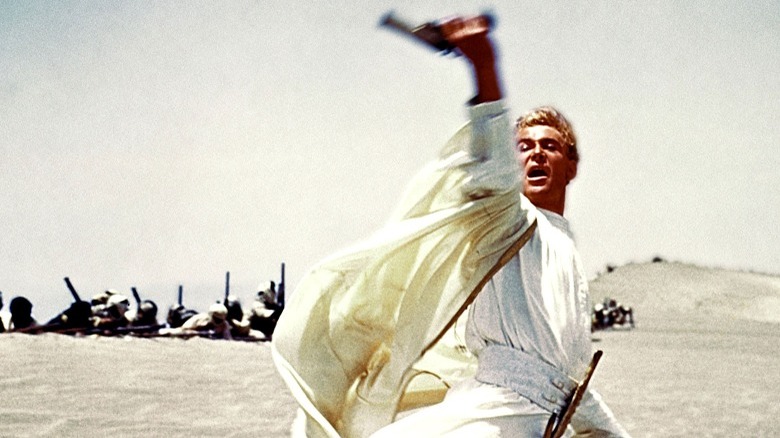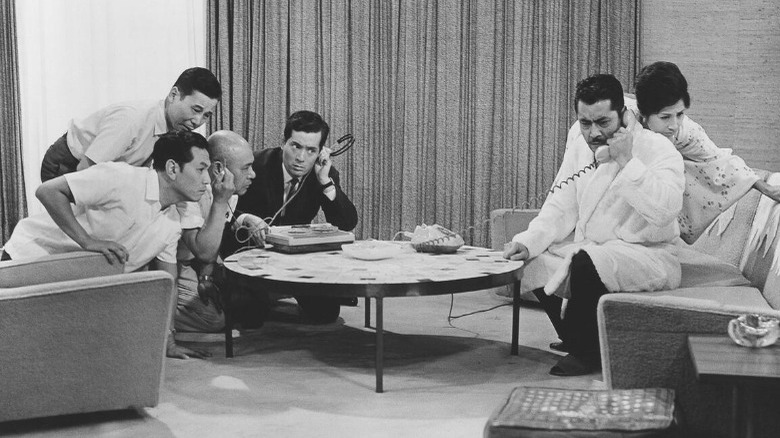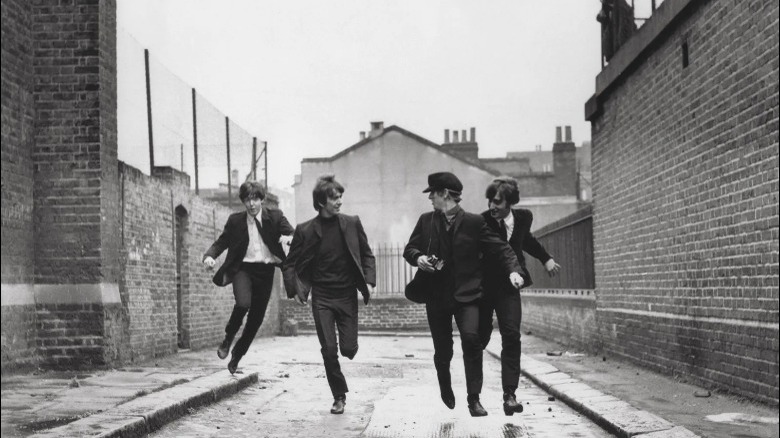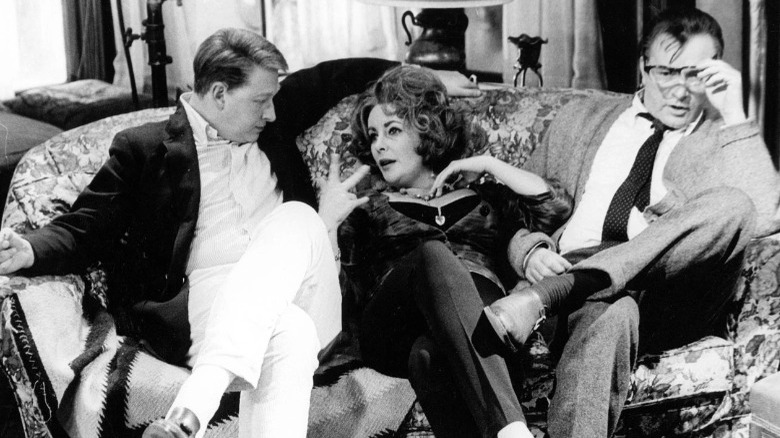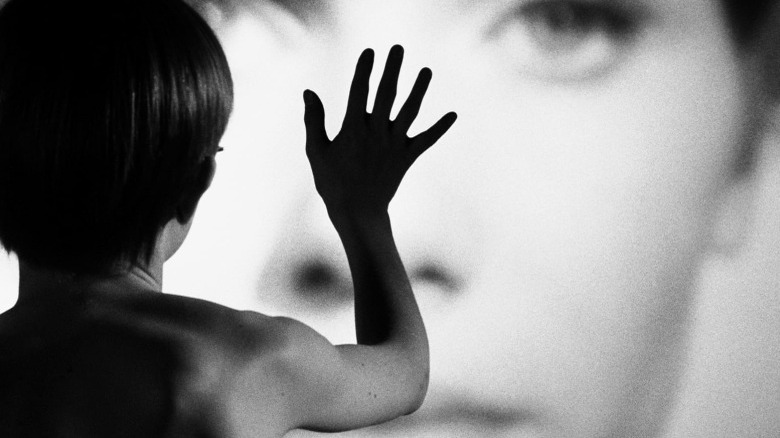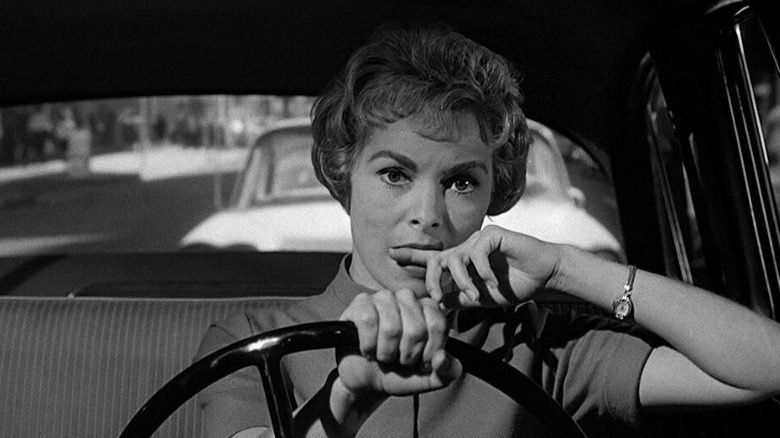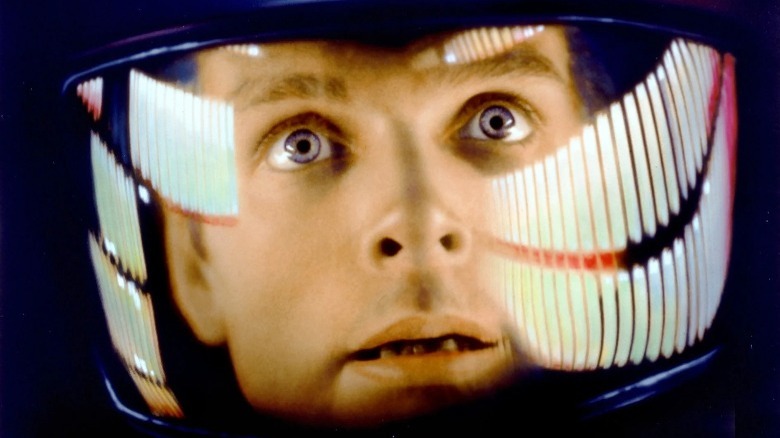15 Best Movies Of The 1960s, Ranked
The 1960s were an incredible time for film. Cinema was still very much a medium figuring itself out. That's not to say that previous decades of cinema were underwhelming — far from it — but the 1960s were a big moment for figuring out new and exciting methods of storytelling. The traditional studio system was effectively dismantled, making way for independent and underground cinema. This allowed for all sorts of formal changes to the medium. In many ways, movies of the decade reflected society, representing major social changes and the counterculture. They say that they don't make films like they used to, and the off-the-scale creativity and innovation behind so many wonderful films from the 1960s makes a strong case that the very best movies are from that bygone era.
Limiting such an extraordinary time of creativity and boldness to a list of just 15 films was nothing short of excruciating. Unfortunately, not every great film from the '60s could make the cut, and plenty of brilliant films, including "The Apartment," "Eyes Without a Face," "8 ½," "Rosemary's Baby," "L'Avventura," "Once Upon a Time in the West," and "The Young Girls of Rochefort," were left out (though please consider these extremely honorable mentions).
Now, let's get into it! Here are the best films of the 1960s.
15. The Battle of Algiers
A searing film about the brutal fight against colonization, Gillo Pontecorvo's 1966 film, "The Battle of Algiers" is a tour de force. Commander Colonel Mathieu (Jean Martin) is sent to 1950s Algeria to crush the resistance efforts of the Algerian people. It's there he faces off against Ali la Pointe (Brahim Haggiag), who grew up a petty criminal but became the leader of the Algerian Liberation Front. Both sides are desperate to come out of the war victorious, leading to a series of astonishing and brutal attacks that throw ethics and morals out the window.
"The Battle of Algiers" is miraculous. Its incendiary approach gives it a tremendous sense of urgency, and the brilliant Ennio Morricone's score gives it a crackling electricity. Director Gillo Pontecorvo thought through every meticulous detail. Like so many great films from the decade, "The Battle of Algiers" has had a significant impact on contemporary movies, recently influencing Gareth Edwards' "Rogue One."
14. Daisies
Věra Chytilová's "Daisies" is like nothing else. It's exuberant, destructive, mad, and completely original. A key film of the Czechoslovak New Wave, Chytilová's 1966 surrealist film is rife with anarchist energy. It couldn't care less about cinematic conventions, openly defying them at every turn to make a magnificent experience.
The landmark feminist film doesn't really have a plot, but it has an undeniable mood and energy. It follows Marie I (Jitka Cerhová) and Marie II (Ivana Karbanová), who are unhappy with the state of the world. They're deeply concerned with how selfish everyone seems to be. They know they can't fix it, so why not join in the madness of it all? "Daisies" is full of outrageous and hilarious moments, and few are more satisfying than the outlandish food fight in which both Maries eat and play with all the food at a magnificent banquet, which they follow with an impromptu fashion show. These women do whatever they want, whenever they want, and just like the film itself, they never do what you expect.
13. La Dolce Vita
One of the most famous Italian films of all time, Federico Fellini's 1960 film, "La Dolce Vita," is an incredible character study of Marcello Rubini (played cinema's coolest leading man, Marcello Mastroianni), a celebrity photographer and journalist. Marcello is an intellectual, searching for satisfaction in his life and career. He's difficult to please, though he encounters two women who may bring meaning to his life: Maddalena (Anouk Aimée), an heiress, and Sylvia (Anita Ekberg), a movie star. There's something stunning about the irony of "La Dolce Vita" (which translates to "the sweet life), as Marcello is a deeply lonely and isolated individual, despite the overwhelming beauty of the people and places around him. Composer Nino Rota does some of his best work with the score, perfectly capturing the film's intense sensuality while also exploring a melancholic undercurrent.
The film has also had a major cultural impact. Rome is well known for being one of the world's most beautiful cities, but it has never looked better than it does through cinematographer Otello Martelli's lens. A glorious sequence shot at Rome's Trevi Fountain likely made the location one of the country's most popular tourist destinations. The film also introduced the word "paparazzi," but what's most impressive about Fellini's film is its startling prescience in understanding just how fame and gossip-hungry we would become.
12. The Swimmer
In Frank Perry's "The Swimmer" from 1968, it's a gorgeous, sunny day in Connecticut, and Ned Merrill (Burt Lancaster) has decided to swim. To the confusion of everyone, instead of just walking or driving home from his neighbor's pool party, Ned decides to use the neighborhood pools like a river and swim his way home. Ned seems to have it all: a powerful physique, lovely daughters, a beautiful home, and a loving wife. As Ned gets closer to home, we learn more about this enigmatic man. While this may seem like a rather bizarre and not particularly interesting synopsis, rest assured that Frank Perry's "The Swimmer" (written by his immensely talented wife, Eleanor Perry) is a hallucinatory and often surreal character study of a man in crisis.
Perry was no stranger to making bold films. His debut "David and Lisa" was one of the first films to openly deal with issues of mental health. Likewise, "The Swimmer" is hugely interested in mental health, especially as it pertains to masculinity. The enormously gifted Burt Lancaster turns in an astounding performance that is full of confidence, underlying misery, and startling vulnerability. Through Lancaster's performance and muscular body, Perry paints a compelling character study.
11. Harakiri
Masaki Kobayashi's 1968 film "Harakiri" focuses on ceremonial seppuku (aka hara-kiri), ritual suicide that was a key part of the samurai's complicated code of honor. A samurai named Tsugumo Hanshiro (Tatsuya Nakadai) arrives at the estate of the Iyi Clan, requesting to commit seppuku in their courtyard — in front of the clan's officials and samurais. Things become complicated when Hanshiro discovers that a samurai has already come to the clan asking to commit seppuku but had ulterior motives. This forces Hanshiro to defy authority and explain why he must go through with the suicide ritual.
Kobayashi uses the samurai film as a way to explore the complex ethics of both the samurai code and feudal Japanese culture. His films are always concerned with resistance and rebellion, and the idea of challenging authority very much runs through the veins of "Harakiri." The film is a powerful moral quandary and certainly isn't your typical action movie (though when the action does happen, it's beautifully choreographed). "Harakiri" is one of the defining films of the 1960s. It defies genre expectations and tells a bold, unforgiving story of standing up to authority.
If you or anyone you know is having suicidal thoughts, please call the National Suicide Prevention Lifeline by dialing 988 or by calling 1-800-273-TALK (8255).
10. The Umbrellas of Cherbourg
In Jacques Demy's 1968 film, "The Umbrellas of Cherbourg," Geneviève (Catherine Deneuve) and Guy (Nino Castelnuovo) are madly in love. The two plan to marry and start a family, but before they can wed, Guy is drafted into the Algerian War. Geneviève's mother, who does not approve of Guy, tries to get her daughter to fall for Roland (Marc Michel), a rich jeweler who can give her the life she deserves. However, Genevieve is pregnant with Guy's baby, but her letters to him are rarely answered.
Classic musicals have a reputation for big, show-stopping performances, but "The Umbrellas of Cherbourg" is markedly different from American musicals of the 1950s and '60s. Every line of dialogue is sung, so while there are songs, they're blended into the rest of the film.
Demy's use of color is unmatched. The color in "The Umbrellas of Cherbourg" is incredibly vibrant, and Demy's ability to evoke mood is staggering. Demy was an incredibly emotive filmmaker who used staging and color to set the mood before his beautiful dialogue takes things to the next level. Its style is exceptional, but the chemistry between Catherine Deneuve and Nino Castelnuovo is scintillating. Few films have the emotion and overwhelming beauty of "The Umbrellas of Cherbourg."
9. Dr. Strangelove: Or How I Learned To Stop Worrying and Love the Bomb
Stanley Kubrick's "Dr. Strangelove: Or How I Learned To Stop Worrying and Love the Bomb" proved that this is Peter Sellers' world and we're all just living in it. The actor delivered one of cinema's most versatile performances as three different characters: Captain Lionel Mandrake, President Merkin Muffley, and the eponymous Dr. Strangelove himself. Each character is unique, and Sellers manages to make them all convincing. The film focuses on a potential nuclear attack and the efforts to stop it in the heat of the Cold War — an incredibly bold choice considering the film's release in 1964 was during a time of enormous uncertainty. Comedies are rarely lauded for their visuals, but "Dr. Strangelove" has a meticulous production design and a perfect style, which is to be expected from a perfectionist like Kubrick. It's a beautiful and incredibly funny film that's full of surprises, absurdity, and nonsense. Still, it never manages to feel inauthentic.
While the world was on edge with the fear of potential atomic devastation, Kubrick's film manages to mock the absurdity of war with panache. The dialogue is effortless and ingenious. "Gentlemen, you can't fight in here, this is the war room!" is eternally quotable. Wickedly funny and filled with risky satire, few films have an endless supply of laughs as impactful as "Dr. Strangelove."
8. Breathless
The French New Wave is one of cinema's most well-known film movements. Emerging in the late 1950s, the movement was the very essence of cool. The French New Wave refused to obey cinematic conventions. Cutting and jumping around narratives at will, the films eschew straightforward stories for ambiguity. No major director was a bigger iconoclast than Jean-Luc Godard, who for over 60 years has been making films that defy standard cinematic language. His feature debut remains his most exciting. Released in 1960, "Breathless" simmers.
Godard's daring film follows the ultra-suave Jean-Paul Belmondo as Michel, a Humphrey Bogart-obsessed criminal on the run after stealing a car and killing a police officer. Michel falls for the luminescent Patricia (a perfect Jean Seberg), an American who works selling the New York Herald Tribune on the streets of Paris. The pair fall for one another, but Patricia is blissfully unaware of Michel's dark past. At every step, "Breathless" does the unexpected, and there's a roughness to it that is incredibly refreshing. It's a bold piece of art that helped change cinema forever and ushered in techniques like the jump cut. "Breathless" is also extremely entertaining. With electric chemistry between Belmondo and Seberg, it's a lovers-on-the-run story that has more than stood the test of time.
7. Lawrence of Arabia
"Lawrence of Arabia" was an undeniable success upon its release in 1962, winning seven Academy Awards, including best picture. The film explores the life of T.E. Lawrence (Peter O'Toole) during World War I and his incredible efforts in the Ottoman Empire. Lawrence is a complex figure, and the film highlights his internal conflicts with war as well as his allegiances. It's hard to imagine anyone equalling Peter O'Toole's titanic presence as the titular T.E. Lawrence. That's all the more startling when you discover that O'Toole almost refused the role.
Director David Lean was no stranger to cinematic epics. He was behind "The Bridge of the River Kwai," "Doctor Zhivago," and "A Passage to India," but the pure feeling of cinematic wonder he engineered in "Lawrence of Arabia" is unmatched. The cut from Lawrence blowing out a match to the desert sunrise is one of cinema's most awe-inspiring moments. Complemented by Maurice Jarre's stirring score, it's an astonishing moment. While the film is nearly four hours long, it certainly doesn't seem like it. "Lawrence of Arabia" is every bit as concerned with the intimate details of political intrigue as it is with large-scale action and massive performances.
6. High and Low
An extremely intense and intricate thriller, Akira Kurosawa's "High and Low" is a tour de force. High-level executive Gondo (Toshiro Mifune) cares deeply about his work at a shoe company, and an internal struggle among shareholders finds him trying to secure a majority stake for control. A dramatic evening escalates to unimaginable tension when he gets a call that his son has been kidnapped, and the kidnapper demands an exorbitant sum for his freedom.
It's not long before Gondo's son appears back at the house. The kidnapper mistakenly took Gondo's chauffeur's son instead. You might think that's where things would de-escalate, but Gondo still finds himself at the center of an epic cat-and-mouse chase that is part police procedural, part moral dilemma.
Kurosawa is often remembered for his fantastic historical epics like "The Hidden Fortress" and "Seven Samurai," but "High and Low" makes it clear that Kurosawa was a master filmmaker regardless of the setting. The film makes 143 minutes seem half as long, and not a single frame goes to waste in this exquisitely crafted thriller. Kurosawa was also a deeply conscious filmmaker. "High and Low" is a ruthless and engaging critique of class and social conditions in 1960s Japan.
5. A Hard Day's Night
One of the very best films of the 1960s is a sensational musical delight. Richard Lester's "A Hard Day's Night" finds The Beatles playing absurd versions of themselves as they evade fans, goof around, and try to make the most of their outrageous success. Because it features one of the world's greatest bands, it's also a musical that features many of the songs from the "A Hard Day's Night" album. The spirit and filmmaking behind the movie have made it influential. Lester's editing is so unexpected and organized in its chaos that Roger Ebert claimed the filmmaker created a "grammar so persuasive that he influenced many other films." The film is timeless while feeling distinctly '60s and is one of the most joyful, hilarious films ever made. Without it, we may have never had music videos. Lester received an MTV award in 1984 when they called him "the father of the music video."
"A Hard Day's Night" could have been a simple vanity project, but it's a tremendously entertaining movie — even if you've never even heard of The Beatles (if that's even possible). Lester's film is special for its reflection of the 1960s counterculture, and "A Hard Day's Night" is every bit as freewheeling, against the grain, and anarchic as the movement itself.
4. Who's Afraid of Virginia Woolf?
Based on Edward Albee's play of the same name, "Who's Afraid of Virginia Woolf" introduced the world to director Mike Nichols, who in 1966, delivered one of the most impressive directorial debuts of all time. The film takes place almost entirely in the home of George (Richard Burton) and Martha (Elizabeth Taylor). It's late, and the married couple has just returned from a party. However, the night's not about to end, as Martha has invited a much younger couple, Nick (George Segal) and Honey (Sandy Dennis), to join them for drinks. The film's tagline promises "an evening of fun and games." While quite a few games are played, there's very little fun to be had for the four of them. "Who's Afraid of Virginia Woolf" is explosive, shocking, deeply uncomfortable yet hugely exciting.
The film is comprised of brilliant performances. Taylor, Burton, Segal, and Dennis were all nominated for Academy Awards. That's a tremendous feat. Both of the film's actresses won for their performances. Elizabeth Taylor had one of the most successful careers imaginable in Hollywood, knowing levels of fame and success that many aspiring folks can only dream of. As Martha, Taylor delivers the best performance of her career as well as one of the most astonishing performances ever committed to film. Martha is legendary, using relentless cruelty to mask a lifetime of disappointment and pain. Taylor plays against type, upending expectations to create an unforgettable performance.
3. Persona
With its quick cuts through seemingly unrelated and uncomfortable imagery and uneasy, discordant musical score, "Persona" begins almost like an arthouse horror film. That may seem unexpected for a filmmaker of Ingmar Bergman's stature, but throughout his incredible career, he was no stranger to the experimental and unexpected. What happens in "Persona" seems unclassifiable. It is a psychological thriller, a horror film, a medical drama, an intimate character study, and a piece of experimental cinema.
The film follows a nurse named Alma (Bibi Andersson), who is brought in to help Elisabet Vogler (Liv Ullmann), a famous actress who finds herself suddenly unable to speak. Alma can't seem to make any progress with Elisabet, so the pair moves to a remote cottage to try and deepen their connection. It's there that Alma begins to confide in Elisabet, and the two bond — so much so that their personae begin to fuse. Both actresses are brilliant in "Persona," but Andersson is a sensation, delivering a deeply humane performance full of hesitancy, vulnerability, regret, desire, and passion. The film is confounding and complex, offering new interpretations with each viewing.
2. Psycho
Marion Crane (Janet Leigh) is in trouble. She's stolen a large sum of money from her workplace and is on the run. It's late, and she's falling asleep at the wheel, so she checks into the Bates Motel. On the off chance, you've not yet seen the master of suspense Alfred Hitchcock's most terrifying film, I won't spoil any of its staggering twists, as they deserve to be experienced naturally.
Hitchcock's greatest films always give us interesting characters, but when it comes to his very best, most intriguing creations, none compare to Norman Bates (Anthony Perkins). In one of cinema's greatest performances, Perkins is spectacularly creepy. His line readings of memorable quotes like "We all go a little mad sometimes" and "A boy's best friend is his mother" never fail to send chills down a viewer's spine. "Psycho" is spectacular in part due to its immaculate design. The black-and-white cinematography is sublime, shadows elevate the mood, Bernard Hermann's score perfectly amplifies feelings of unease and downright terror, and the film is drenched in an incredibly sinister atmosphere.
The legendary shower scene has been the subject of so much analysis that there's an entire documentary devoted to its construction and impact. It also has the rather odd distinction of being the first film to ever show a toilet on screen. Though it stumbles at the end with a need to over-explain itself, Hitchcock's "Psycho" is one of the defining films of the 1960s.
1. 2001: A Space Odyssey
Stanley Kubrick was one of the most celebrated directors in cinema history, and it's easy to see why. His quest for perfection led to some of the most memorable movies ever in which he tackled just about every genre under the sun. His creativity was simply off-the-charts — or rather, out-of-this-world — with his 1968 sci-fi epic, "2001: A Space Odyssey." Its plot is fairly simple: A mysterious monolith has appeared on the moon, so astronauts set out to discover its origin. However, the film is about something far greater and open to infinite interpretations. It defies conventions at every turn: No dialogue is uttered for the first 25 minutes as music and visuals combine to create an unforgettable, timeless, and eerily accurate predictor of the future.
Kubrick's "2001: A Space Odyssey" is a life-changing movie. For me, it was my gateway to pursuing cinema as a career, as it made me believe that the possibilities of film are practically limitless. It grapples with great philosophical issues without ever feeling preachy, and no science fiction film has ever made space travel so thrilling. Its limited dialogue, complex plot, and slow pacing may have initially turned off audiences, but it has since earned its place as one of the most celebrated and extraordinary films ever made. Phrases like "never been done before" get tossed around a lot, but the cinematic magic found in "2001" has never been matched.
